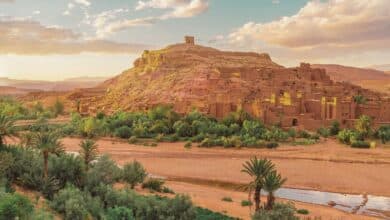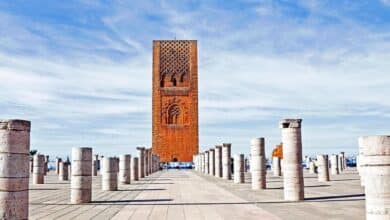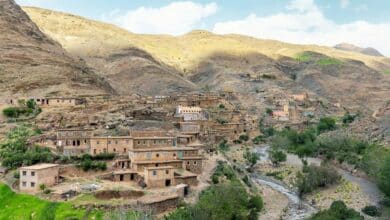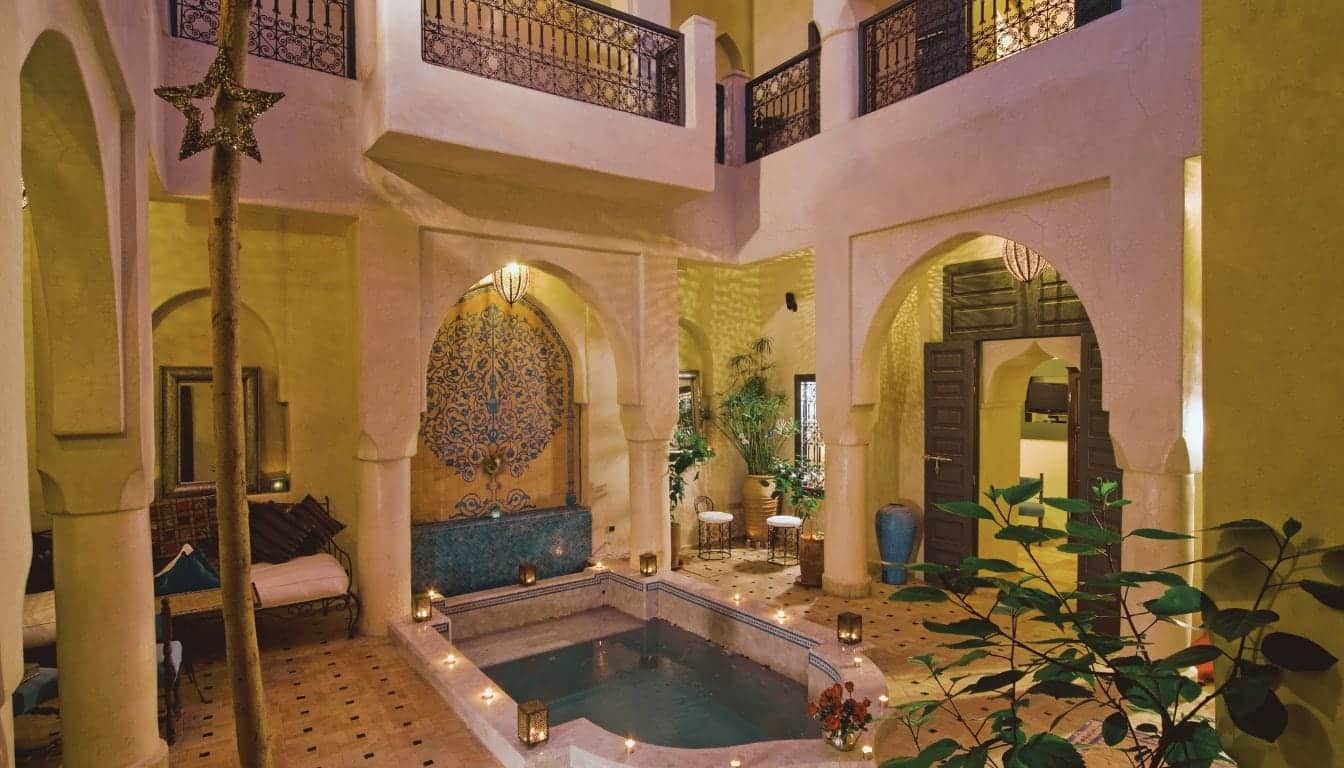
- Riads are traditional Moroccan houses with an interior courtyard or garden, found in historic medinas.
- The architectural features blend Islamic, Moorish, and Moroccan designs, reflecting a diverse cultural heritage.
- Traditional furniture and intricate decor like Zellige tiles and Moroccan rugs highlight Morocco’s rich craftsmanship.
- Riads offer a serene oasis and promote privacy and natural cooling with their inward-facing design.
- These historic structures have been restored as boutique accommodations, providing an authentic Moroccan experience.
Ever thought about what makes Moroccan homes so special, especially in cities like Marrakech and Fes? The secret is the riad—a typical Moroccan house that reflects the nation’s rich culture. Let’s explore what sets these amazing homes apart.
In the historic medinas of Morocco, riads are not just buildings. They are a part of Moroccan culture, offering a peaceful getaway from the city life. Each riad has a lovely interior courtyard or garden. This space ensures privacy and cools the home.
The design includes features like arched doorways and windows. These show influence from Islamic, Moorish, and Moroccan styles. They create a unique mix of cultural design.
The riads are decorated with Zellige tiles, colorful Moroccan rugs, and hand-carved furniture. These items display Morocco’s excellent craftsmanship. Initially, riads were homes of rich traders and nobles. Today, they are turned into small hotels, letting visitors experience true Moroccan living.
Traditional vs Modern Riads
Riads are key to Moroccan culture, showcasing its heritage and design skills. They provide a peaceful escape in busy cities like Marrakech, Fes, and Essaouira. You can find each riad, whether old-fashioned or up-to-date, packed with distinct features for every visitor’s liking.
Features of Traditional Riads
Traditional riads highlight Morocco’s unique architectural style with a strong focus on enjoying quiet and personal space. These houses usually have six to eight rooms, each with its own traditional décor and a private bathroom. The main courtyards in these riads are full of greenery like orange trees, lemon trees, or olives, adding to the peaceful atmosphere. They might have a tiled fountain and potted plants as well, and some are open above to let in sunlight and fresh air.
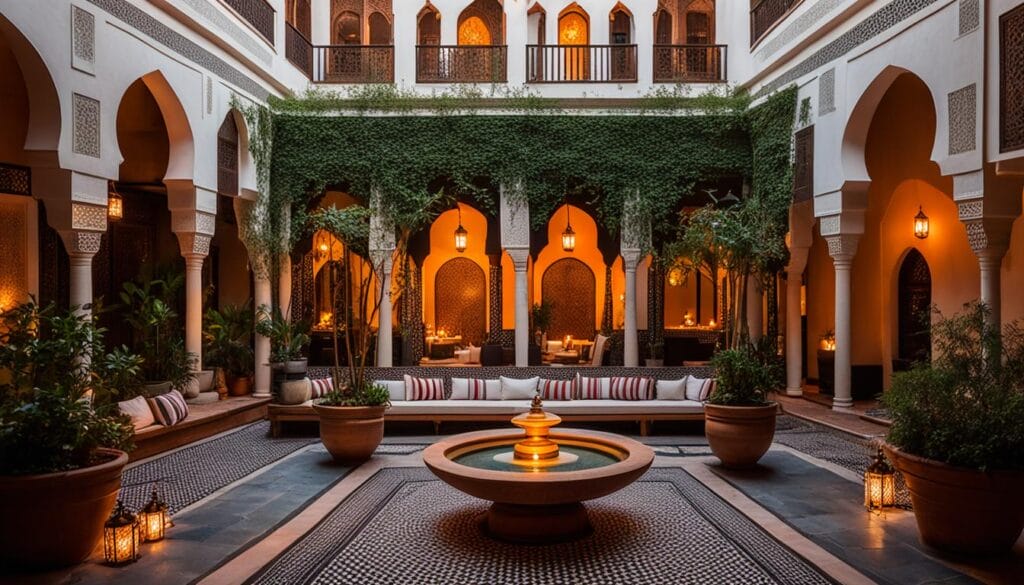
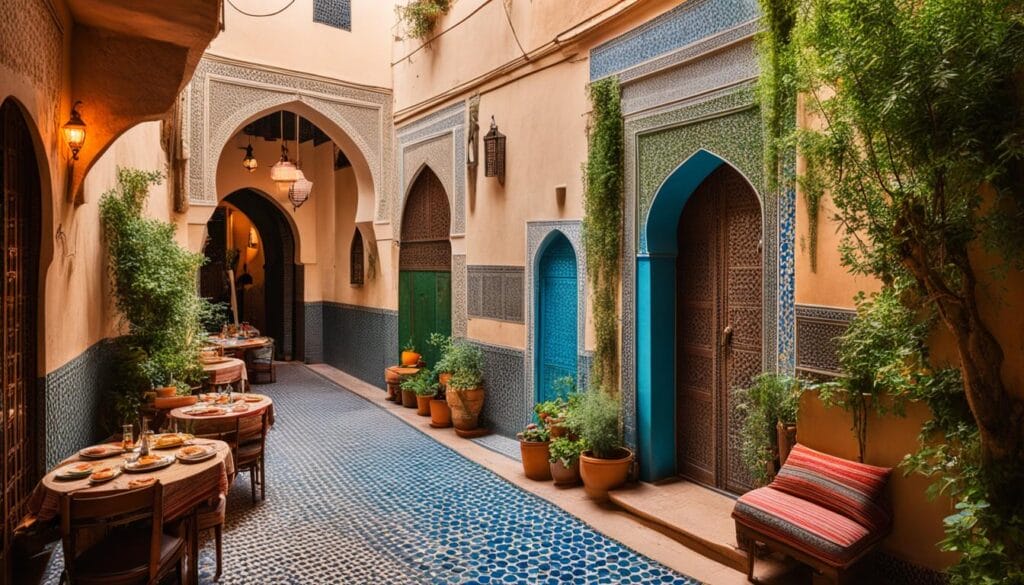
Historical Preservation and Tourism
The careful restoration of riads helps protect Moroccan medinas’ history. Some riads are UNESCO sites, highlighting ancient architecture and design. Tourists love this blend of history and modern hospitality. Riads also help sustain tourism by offering cultural experiences and luxury. They are a top choice for those wanting to explore Morocco’s history and culture.
Riads are more than places to stay; they’re like a piece of Moroccan culture and history. You can choose between a traditional or a modern riad. But either way, you’ll feel the unique design that combines privacy, a sense of community, and peace. This mix is what makes riads special.
For a top riad experience, look at Riad Enchanté in Marrakech. It’s in the busy old medina but feels like an oasis. There’s a courtyard with a fountain, a rooftop terrace, and rooms filled with traditional details. The beautiful tile work and friendly staff make you feel Morocco’s warm welcome. They serve local breakfasts and help arrange trips, making your stay unforgettable.
Riads are true representatives of Morocco’s culture and history. Their roots go back to the 11th century and now welcome guests from all over. Staying in a riad in Marrakech links you to the country’s past and present. And Riad Enchanté offers a unique way to immerse yourself in Moroccan life and culture.

